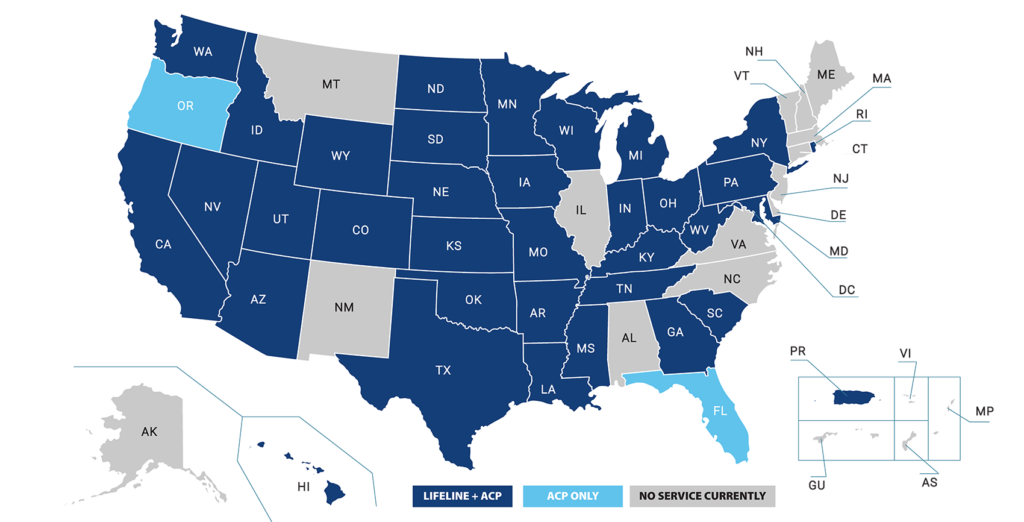As technology continues to advance, the importance of network segmentation has become increasingly important. Network segmentation involves dividing a network into smaller subnetworks, allowing for better security, improved performance, and easier management. But with so many options available, choosing the right reason to segment a network can be a daunting task.
There are numerous reasons why network segmentation is important, but not all of them may be relevant for your organization. This article will explore the various reasons for network segmentation and help you determine which choice is a good reason to segment your network. From improving security to optimizing performance, we will cover all the essential information that you need to make an informed decision about network segmentation. So, let’s dive in!
Network Segmentation: What It Is & Why It’s Important
Network segmentation is the process of dividing a large network into smaller segments or subnets. It is a key part of modern network security and is used to improve network performance, reduce traffic, and create more secure networks. Segmentation can also be used to improve network management and monitoring capabilities.
Network segmentation is often used to increase the security of a network by isolating sensitive data or systems from the rest of the network. Segmenting a network also allows for more control over who can access certain parts of the network, as well as more granular control over the resources that are available to users. This can help to reduce the risk of unauthorized access or misuse of data.
The Benefits of Network Segmentation
Network segmentation can provide a number of benefits, including improved security, improved performance, and improved network management.
Network segmentation can help to improve security by isolating sensitive data or systems from the rest of the network. By separating sensitive data from the rest of the network, it can be more difficult for attackers to gain access to it. Segmenting a network can also help to reduce the risk of unauthorized access or misuse of data.
Network segmentation can also help to improve network performance by reducing traffic. By separating the network into smaller subnets, each subnet has less traffic to contend with, which can result in improved performance. Network segmentation can also help to improve network management by allowing for more granular control over resources and access.
Which Choice is a Good Reason to Segment a Network?
There are many reasons why segmenting a network may be beneficial, including improved security, improved performance, and improved network management. In particular, segmenting a network can be a good choice for organizations that store sensitive data or systems, as it can help to protect them from unauthorized access or misuse of data. It can also be a good choice for organizations that need to manage their resources and access more granularly.
For organizations that need to reduce traffic and improve performance, network segmentation can be a good choice. By separating the network into smaller subnets, each subnet has less traffic to contend with, which can result in improved performance. Additionally, segmentation can provide for more granular control over resources and access, which can help to improve network management.
Frequently Asked Questions
Network segmentation is the practice of dividing a computer network into multiple sub-networks in order to improve security, performance, and manageability.
What is network segmentation?
Network segmentation is the process of dividing a large network into smaller, interconnected sub-networks. This is done to improve the performance, security, and manageability of the entire network. By segmenting a network, it is easier to control access to different parts of the network and to isolate any potential security threats. Network segmentation also allows for greater flexibility in the configuration of the network, allowing for the customization of services and applications to the different parts of the network.
What are the benefits of network segmentation?
Network segmentation has many benefits, including improved security, performance, and manageability. By dividing a network into smaller sub-networks, it is easier to control access to different parts of the network and to isolate any potential security threats. Network segmentation also allows for greater flexibility in the configuration of the network, allowing for the customization of services and applications to the different parts of the network. Additionally, segmenting a network can help to reduce the clutter and complexity of the network, making it easier to manage and maintain.
What is a good reason to segment a network?
A good reason to segment a network is to improve security. By segmenting a network, it is easier to control access to different parts of the network and to isolate any potential security threats. Additionally, segmenting a network can help to reduce the clutter and complexity of the network, making it easier to manage and maintain. By making the network more secure, it is possible to reduce the risk of unauthorized access or malicious attacks.
What are the drawbacks of network segmentation?
Although network segmentation can have many advantages, there are also some drawbacks. Network segmentation can be time consuming and complex, as it requires a thorough understanding of the network and the potential security threats. Additionally, segmenting a network can increase the amount of hardware and software needed, as multiple sub-networks will require a larger number of network devices. Finally, network segmentation can limit the scalability of the network, as the number of sub-networks and the complexity of the network topology can become restrictive.
How can network segmentation be implemented?
Network segmentation can be implemented by using a variety of methods, such as VLANs (Virtual Local Area Networks), subnets, firewalls, VPNs (Virtual Private Networks), and access control lists. Each of these methods provides different levels of security and manageability, so it is important to choose the method that best fits the needs of the network. Additionally, it is important to ensure that the network segmentation is implemented correctly, in order to maximize the security and performance of the network.
In conclusion, network segmentation is a critical aspect of network security. It is an essential strategy for protecting sensitive data, reducing the risk of data breaches, and preventing unauthorized access. By segmenting your network, you can limit the scope of any potential security threats and mitigate the impact of any security incidents that do occur.
When considering which choice is a good reason to segment a network, there are several factors to consider. The size and complexity of your network, the type of data you store, and the level of security you require are just a few of the factors that will impact your decision. Ultimately, the decision to segment your network should be based on a comprehensive risk assessment that takes into account your organization’s unique needs and goals. With proper planning and implementation, network segmentation can help ensure the security and integrity of your organization’s data and systems.




